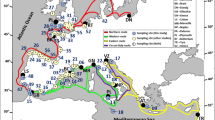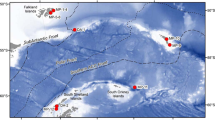Abstract
IT has probably been the experience of most who have undertaken a voyage to sea, to have observed land-birds and insects far from the nearest coast, either in course of transit or resting on the vessel. Many travellers have observed these visitants, and their records have proved valuable biological facts bearing on the occasional migrations of species and their consequences as has been pointed out by Mr. Darwin. But it is more than probable that this dispersal of land species over extremely wide areas of sea is far more constant and less occasional than we are at present justified in affirming from the facts as yet collected. Unfortunately however, we glean very little biological information from the great mercantile marine service of this country, an assemblage of which we are so justly proud, and it is only by costly Government expeditions that we become acquainted with facts that remained and would have remained unnoticed by the immense number of sailors who leave our shores. Nor can we feel surprised at the result when we recollect that biology is scarcely a subject thought necessary to form part of a mariner's education. A good instance is afforded by the results of the voyage of the Beagle. An impalpable powder fell upon the ship off the Cape de Verd Islands. This powder must have fallen upon many ships before; but Mr. Darwin being on board the Beagle, it was collected and sent for inspection to Ehrenberg, and results of great scientific value accrued. Had our great philosophic naturalist not been there, this dust might still have fallen on ships to the present day, been swept away as a nuisance, and unrecognised as of any possible interest. That errant species must frequently visit vessels was shown me on a voyage to the East a few years ago. Thus, in the early part of September, in about lat. 12° N. and long. 26° W., a dove flew on board, which, after resting for a short time, again pursued its journey. In about lat. 9° N. and long. 25° W. a moth, apparently S. convolvuli, reached the vessel just before the arrival of a squall. In reply to my inquiries, both the officers and crew stated that these were simply very common occurrences.
This is a preview of subscription content, access via your institution
Access options
Subscribe to this journal
Receive 51 print issues and online access
$199.00 per year
only $3.90 per issue
Buy this article
- Purchase on Springer Link
- Instant access to full article PDF
Prices may be subject to local taxes which are calculated during checkout
Similar content being viewed by others
Author information
Authors and Affiliations
Rights and permissions
About this article
Cite this article
DISTANT, W. The Migration of Species. Nature 12, 86–87 (1875). https://doi.org/10.1038/012086b0
Issue Date:
DOI: https://doi.org/10.1038/012086b0
Comments
By submitting a comment you agree to abide by our Terms and Community Guidelines. If you find something abusive or that does not comply with our terms or guidelines please flag it as inappropriate.



